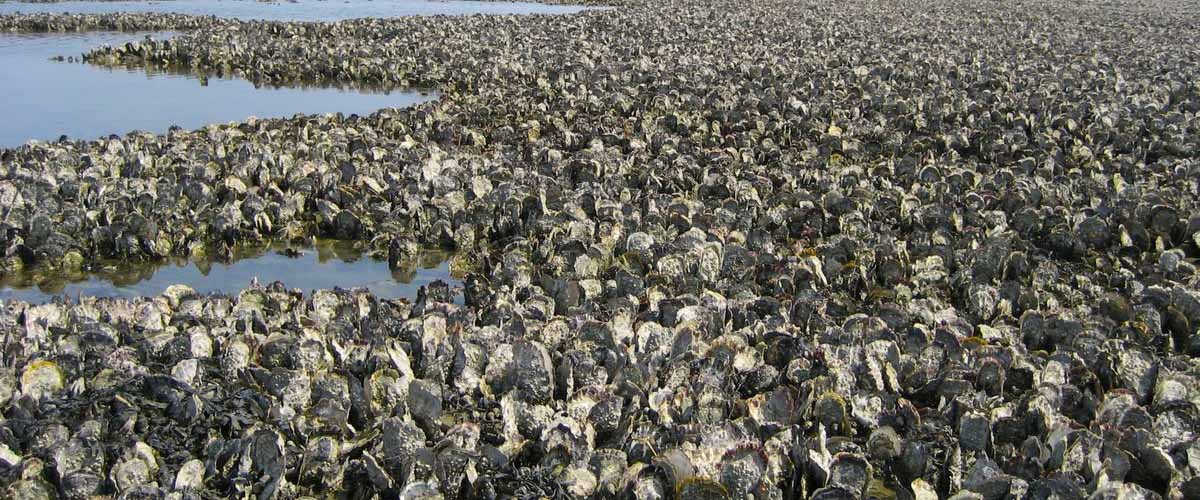With human threats to coastal ecosystems reaching unprecedented levels, habitat restoration efforts are becoming increasingly important to maintain the ecosystem services provided by these habitats. Restoration efforts are cost and labor intensive and, as such, research informing these efforts is critical for optimal allocation of limited resources. A recent publication, co-authored by MSC graduate student Christopher Baillie, highlights the importance of considering physical and biological interactions when implementing oyster reef restoration initiatives.
In the study, appearing in the Journal of Applied Ecology, Baillie and colleagues experimentally restored oyster reefs across a relatively narrow (< 0.5m) depth gradient from a shallow subtidal to mid-intertidal habitat. Despite higher recruitment of larval oysters in at the deepest reefs, after a year of monitoring the authors found that adult oyster densities in the mid-intertidal zone (shallower) were nearly an order-of-magnitude higher than in the subtidal (deeper) , likely due to higher levels of predation and competitive interactions such as biofouling in the subtidal zone.
These results demonstrate that classic paradigms regarding vertical gradients in competition and predation on rocky shores and salt marshes can also be applied to restored shellfish reefs. By identifying a vertical zonation “hot spot” for successful oyster restoration and the factors influencing oyster settlement and survivorship, this research has the potential to aid resource managers and restoration projects as they plan future restoration initiatives.

